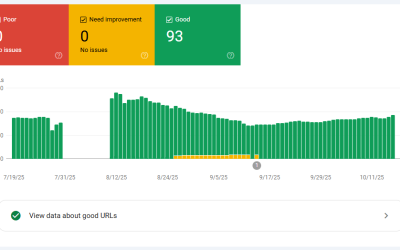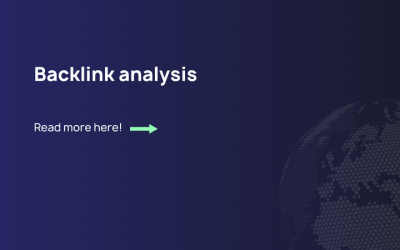Negative SEO means using harmful methods to hurt a competitor’s search engine rankings. This can include making low-quality backlinks, copying content, posting fake reviews, or using other dishonest tactics. These actions aim to cause penalties from search engines. These attacks take advantage of search engine algorithms. They create false signals that make a website seem to break quality rules. This can lead to lower rankings, manual penalties, or even removal from search results. Search engines are better at spotting and ignoring clear negative SEO attempts. However, clever attacks can still harm unsuspecting websites.
Purpose & Context
Negative SEO represents the dark side of competitive digital marketing, where unethical practitioners attempt to gain rankings by sabotaging competitors rather than improving their own websites. Understanding negative SEO is important for website owners and SEO experts. They need to protect their online assets from harmful attacks.
The main goal of negative SEO attacks is to make search engines punish target websites. They do this by creating patterns that seem to break Google’s quality rules. Attackers can create many spammy backlinks, copy and duplicate content on different sites, or post fake negative reviews. These actions aim to harm a competitor’s online reputation.
Successful negative SEO attacks can lead to big traffic losses and drops in search engine rankings. This can harm your reputation for a long time, making recovery take months or even years. Even failed attacks can waste a lot of time and resources. Target sites must investigate and respond to threats to their search visibility.
Key Components of Negative SEO
- Spammy Link Building: This means creating lots of low-quality backlinks. These links often come from link farms, adult sites, gambling domains, or other unrelated sources. The goal is to make the target’s backlink profile look manipulative
- Content Scraping and Duplication: This occurs when someone takes content from a specific website. They then share that content on other sites. This creates duplicate content problems. It can confuse search engines about which site is the original source
- Fake Review Attacks: This involves posting false negative reviews on platforms like Google My Business and Yelp. These attacks aim to hurt local SEO performance and damage a brand’s reputation
- Technical Sabotage: This involves hacking websites. The goal is to add harmful code, create redirect chains, or change important SEO elements. These elements include title tags and meta descriptions
- Social Media Impersonation: This is when someone makes fake social media profiles. They do this to share negative information or act in ways that can harm a brand’s reputation. This can also affect indirect SEO signals
Application in SEO Strategy
Protecting against negative SEO requires proactive monitoring and defensive strategies rather than reactive damage control. Use tools like Ahrefs, SEMrush, and Google Search Console to monitor your backlinks. This helps you spot any strange link patterns that could mean an attack is happening.
Set baseline metrics for your website’s performance. This includes usual link acquisition rates, traffic patterns, and ranking positions. Doing this helps you spot any unusual changes that could indicate negative SEO activity. Regular monitoring allows for early detection and faster response times.
Make a clear plan that outlines how to handle harmful links. Include steps for disavowing these links, reporting attacks to search engines, and keeping your team informed about possible threats. Having procedures in place reduces response time and minimizes potential damage from successful attacks.
Practical Implementation Tips
You should set up automated alerts in Google Search Console and other SEO tools. These alerts will notify you of sudden increases in backlinks, drops in traffic, or changes in rankings. These changes could signal negative SEO activity. Early detection is crucial for minimizing damage from malicious attacks.
Maintain regular backups of your website and monitor for unauthorized changes to important pages, meta tags, or site structure. Technical negative SEO attacks often involve subtle changes that can go unnoticed without systematic monitoring.
What to avoid: Don’t panic and immediately disavow all questionable links without proper analysis. Some link acquisition patterns that seem suspicious could be natural changes. They might also come from real SEO efforts by competitors that happen to match your ranking changes.
How Search Royals Can Help You
Creating a strong and varied backlink profile is the best way to protect against negative SEO attacks. It shows clear patterns of real link building that search engines can easily tell apart from fake links. Search Royals’ marketplace offers high-quality backlinks that are earned through editorial means. These backlinks help make your link profile stronger. They also help protect you from attacks. This makes any negative SEO attempts seem fake. They look different from your usual pattern of quality link building.
FAQ Mini-Section
Q: How can I tell if my website is under a negative SEO attack?
A: Watch for sudden spikes in low-quality backlinks. Also, keep an eye out for unexpected ranking drops without any on-page changes. Look for increases in spammy referring domains or strange patterns in how you acquire backlinks. Regular monitoring through Google Search Console and SEO tools helps identify these patterns quickly.
Q: Should I disavow all suspicious backlinks immediately if I suspect negative SEO?
A: No, exercise caution with disavowal tools. Analyze each link carefully, as some apparently suspicious links might be legitimate. Focus your disavowal efforts on obvious manipulative patterns. This includes many links from unrelated adult, gambling, or pharmaceutical sites that use exact-match anchor text.
Q: How effective are negative SEO attacks in actually harming rankings?
Modern search engines are much better at spotting and ignoring clear negative SEO attempts. This makes successful attacks less common than before. However, sophisticated attacks using relevant but low-quality sites can still cause damage, making proactive monitoring and strong defensive link profiles essential.


